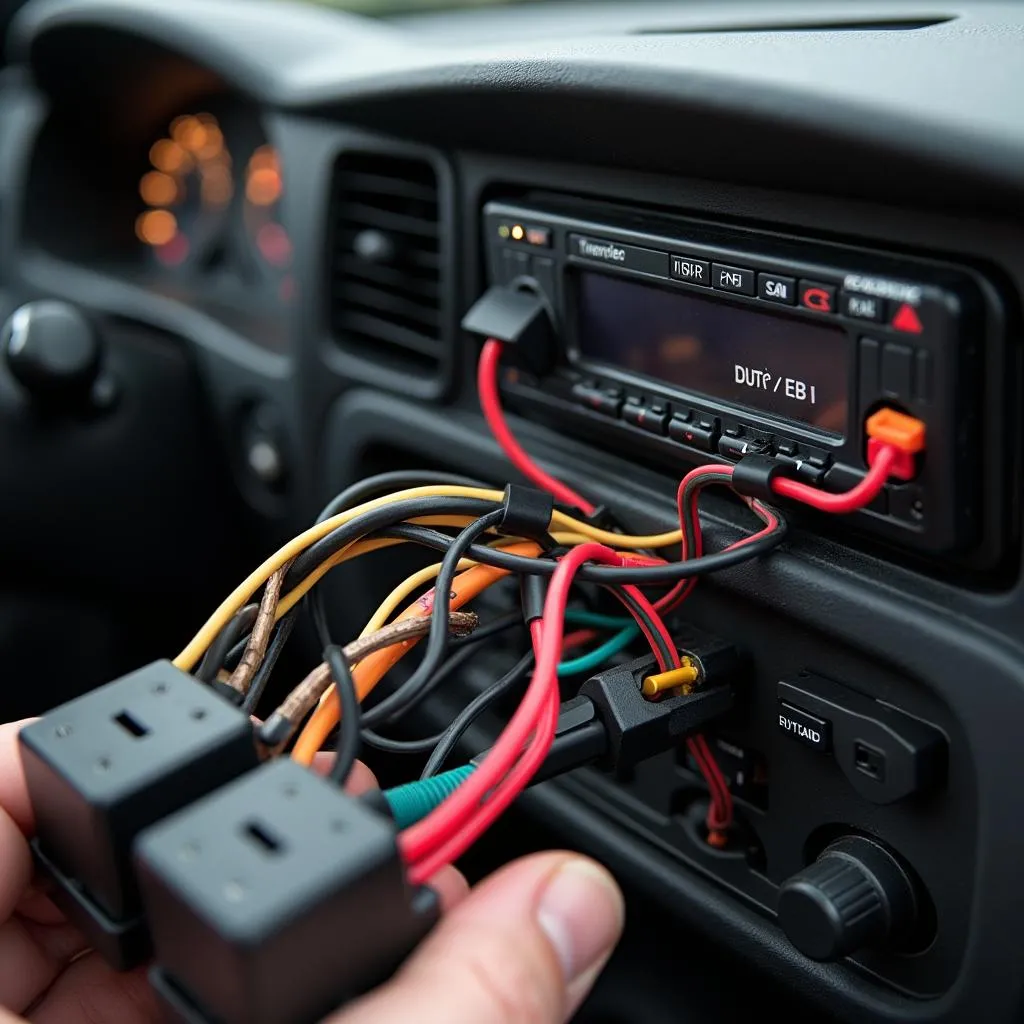The brake warning light is one of the most important signals in your car. When it illuminates, it’s your car’s way of saying there’s a problem with the braking system that needs immediate attention. Ignoring this light could lead to brake failure, putting you and others at risk. But what does a brake warning light look like? And what should you do when it turns on?
Identifying the Brake Warning Light
Most cars feature a universal symbol for the brake warning light: a bright red circle with an exclamation mark (!) inside. This symbol is standardized to be easily recognizable across different vehicle makes and models. You’ll find this light within your main instrument cluster, usually near the speedometer or fuel gauge.
While the exclamation mark symbol is the most common, some vehicles might have a different but equally alarming signal:
- “BRAKE” Text: Certain cars display the word “BRAKE” illuminated in red instead of the symbol.
- Parking Brake Light: Don’t confuse the brake warning light with the parking brake light. This light, often depicted as a “P” within a circle, indicates that your parking brake is engaged. While not as serious, it should be addressed before driving.
Why is My Brake Warning Light On?
A glowing brake warning light signifies a potential issue with your braking system. Here are some common culprits:
- Low Brake Fluid: One of the most frequent reasons, low brake fluid level can significantly affect braking performance. This could indicate a leak in the system.
- Worn Brake Pads: Your brake pads have a wear indicator that triggers the warning light when they thin out, signaling it’s time for replacements.
- ABS Issue: While your regular brakes might still function, an issue with the Anti-lock Braking System (ABS) will trigger the warning light.
- Brake Master Cylinder Problem: This vital component controls brake fluid pressure. Any faults within it necessitate immediate attention.
- Faulty Brake Sensor: Sometimes, a malfunctioning sensor can incorrectly trigger the warning light.
“It’s crucial to remember that the brake warning light doesn’t pinpoint the exact problem,” says veteran automotive engineer, Robert Hernandez. “It’s a signal that something within a complex system requires professional inspection.”
What to Do When the Brake Warning Light Comes On
If your brake warning light illuminates while driving, it’s crucial to react promptly and safely:
- Stay Calm: Panicking will only worsen the situation.
- Assess Your Surroundings: Find a safe spot to pull over, away from traffic.
- Check Your Parking Brake: Ensure it is fully disengaged.
- Consult Your Owner’s Manual: It contains specific instructions and recommendations for your car model.
- Call for Help: Contact a qualified mechanic or roadside assistance. Driving with a suspected brake problem is highly discouraged.
Preventing Brake Warning Light Issues
Proactive maintenance is key to preventing unexpected brake issues:
- Regular Inspections: Schedule routine brake checks with a qualified mechanic.
- Brake Fluid Check: Learn to check your brake fluid level and top it off as needed. Refer to your owner’s manual for the type of fluid.
- Mindful Driving Habits: Avoid harsh braking whenever possible, as it can accelerate brake pad wear.
Brake Warning Light FAQs
1. Can I drive a short distance with the brake warning light on?
It’s highly discouraged. Even a short drive with a compromised brake system poses significant safety risks.
2. How much does it cost to fix a brake warning light issue?
The cost varies widely depending on the underlying problem, from a simple brake fluid top-up to more complex repairs like replacing brake calipers or the ABS module.
3. Can a bad battery cause the brake warning light to come on?
While rare, a severely depleted or faulty battery can sometimes disrupt the electrical system, potentially triggering warning lights, including the brake warning light.
4. How often should brake fluid be changed?
Refer to your owner’s manual for specific recommendations, but a good rule of thumb is to have your brake fluid flushed and replaced every 2-3 years or as advised by a mechanic.
5. Why is my brake warning light flashing?
A flashing brake warning light often signals a more critical problem, typically related to the ABS system. It’s essential to stop driving immediately and seek professional help.
Don’t Ignore the Warning
what does brake pad warning light look like
dakota digital vhx brake warning indicator
Your car’s brake warning light is a critical safety feature, not to be ignored. By understanding what it looks like, why it activates, and how to respond, you can ensure your safety and that of others on the road. Remember, when it comes to brakes, prevention and timely action are crucial for a safe driving experience.

